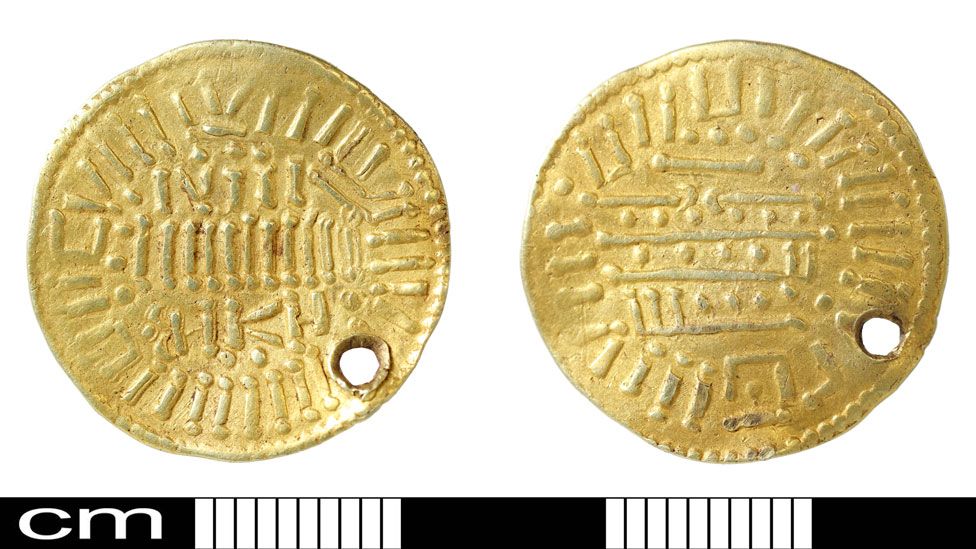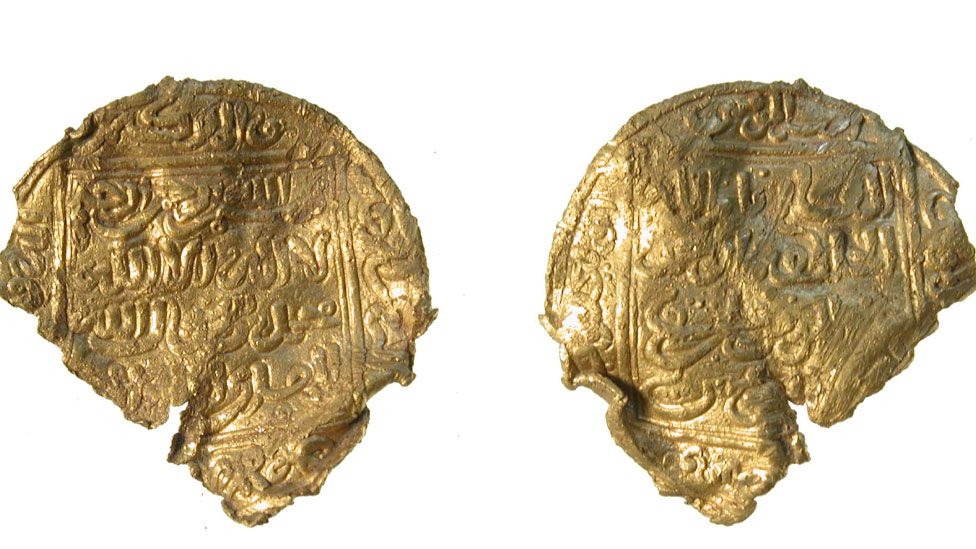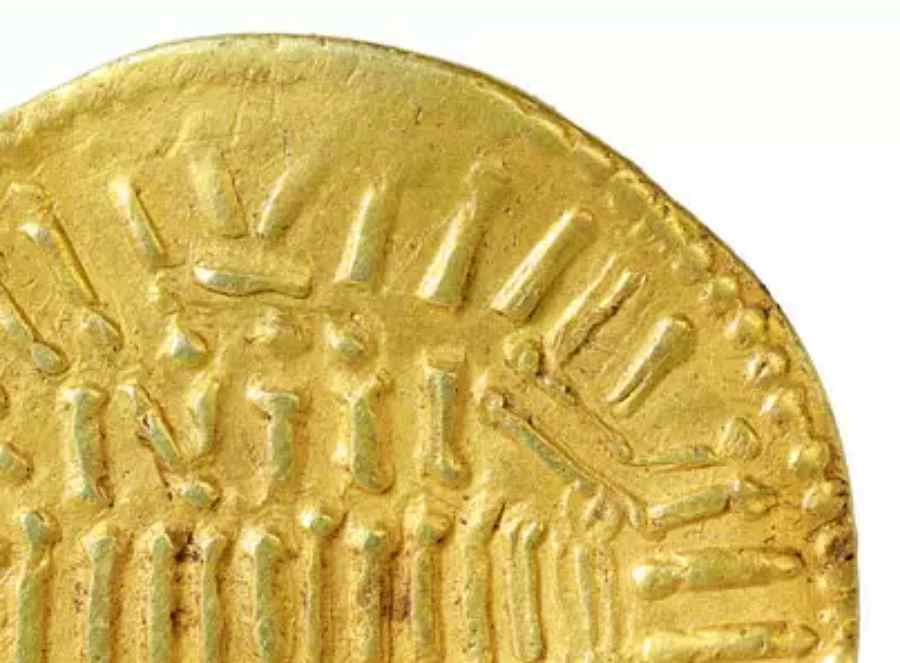Wed 05 Apr 2023:
An imitation Arabic dinar, discovered by a metal detectorist near a small British village on the Norfolk coast, may have been made by the Vikings, a university professor has explained.
According to a report on the BBC website, the “spectacular” 9th century gold coin was found close to Morston in April 2021. It has been declared treasure by a coroner.
Professor of Early Medieval English History at Cambridge University, Rory Naismith, was quoted as saying that “the Vikings had a lot of contact with the Muslim world” so it was “plausible” that they could have struck imitation dinars. “It’s very unusual to find such a thing and it’s completely unique,” he added.
The “coin” also has a hole punched into it, indicating that it may have been designed as jewellery, the report said, noting that some gold dinars from the Anglo-Saxon period arrived in England via Italy.
Vikings may have made fake gold Arabic dinar, says expert https://t.co/YFpBkSj2tp
— BBC News (UK) (@BBCNews) April 3, 2023
Professor Naismith mentioned that the find “is a bit ropey,” and that “It looks like it’s made by someone who knows the generalities of what a dinar looks like, but is not handling them enough to get the Arabic right.”
What should have been Arabic script has “degenerated into a series of lines and is completely illegible,” he pointed out.

The imitation is “a bit ropey” and seems to be made by someone who unable to get the Arabic right, Rory Naismith said.
The imitation dinar was “most likely” struck in the second half of the 9th Century, Naismith believes, because it was a period when Vikings were active in the area. As there is no evidence that Arab traders came to England at this time, he suggested that the coin had been struck in Scandinavia, before being lost in Norfolk.
 This 12th Century dinar found in Suffolk 12 years ago shows the Arabic script the maker was attempting to imitate.
This 12th Century dinar found in Suffolk 12 years ago shows the Arabic script the maker was attempting to imitate.
Earlier this month, a Viking-era hoard was unearthed at a World Heritage site in northern Germany, containing gold artefacts and coins, including a replica of an Islamic gold dinar, reassembled into a brooch, dating back to the Almohad caliphate which was established in today’s Morocco between the 12th and 13th centuries.
The Vikings came into contact with Muslims during their raids and travels across Europe and beyond from the 8th to the 11th century. These interactions occurred through trade, diplomacy and military campaigns. Although the interactions between Vikings and Muslims were often violent, there were also instances of peaceful coexistence and cultural exchange.
___________________________________________________________________________________________________________________________________
FOLLOW INDEPENDENT PRESS:
TWITTER (CLICK HERE)
https://twitter.com/IpIndependent
FACEBOOK (CLICK HERE)
https://web.facebook.com/ipindependent
Think your friends would be interested? Share this story!





